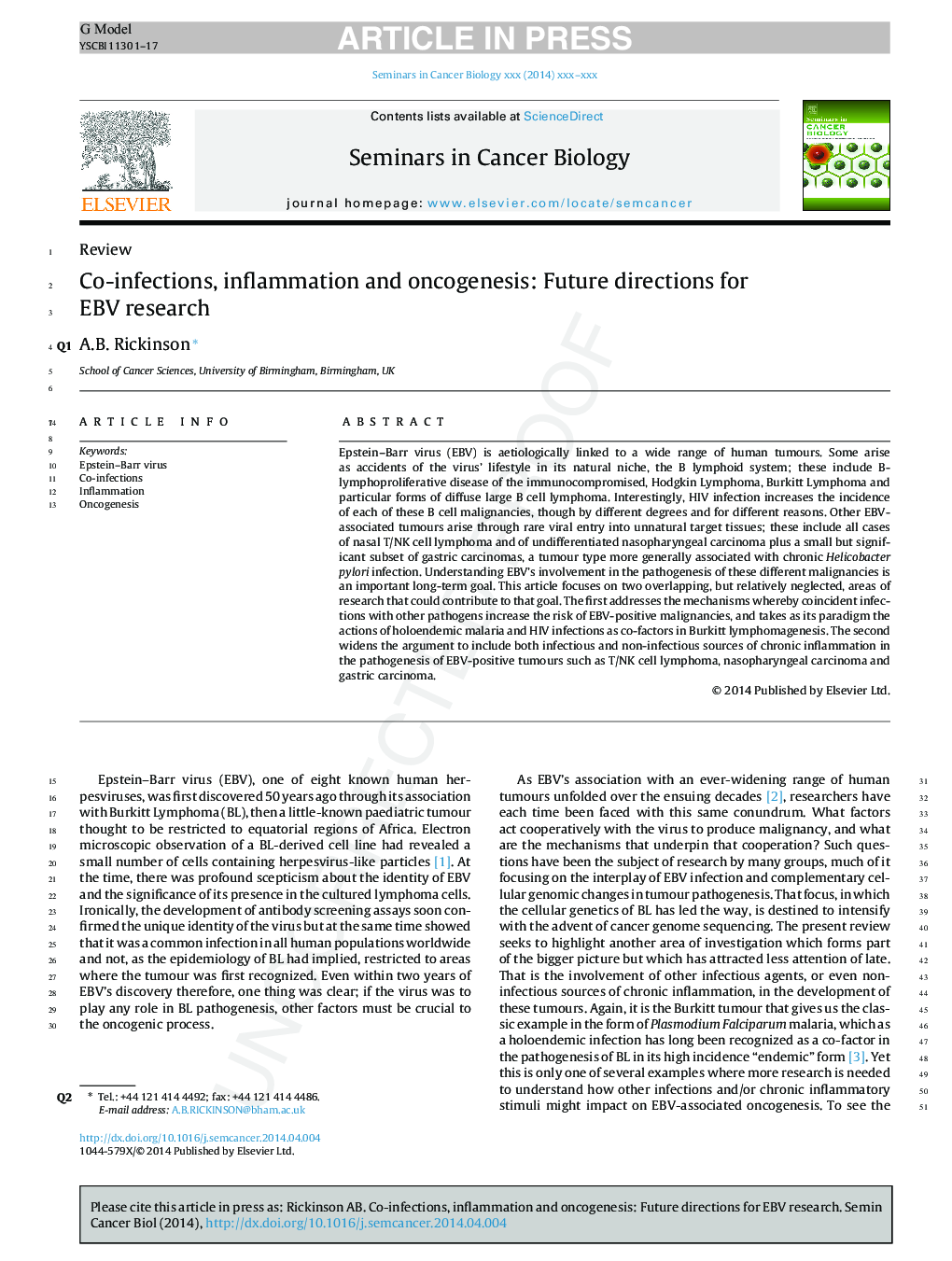| Article ID | Journal | Published Year | Pages | File Type |
|---|---|---|---|---|
| 8362382 | Seminars in Cancer Biology | 2014 | 17 Pages |
Abstract
Epstein-Barr virus (EBV) is aetiologically linked to a wide range of human tumours. Some arise as accidents of the virus' lifestyle in its natural niche, the B lymphoid system; these include B-lymphoproliferative disease of the immunocompromised, Hodgkin Lymphoma, Burkitt Lymphoma and particular forms of diffuse large B cell lymphoma. Interestingly, HIV infection increases the incidence of each of these B cell malignancies, though by different degrees and for different reasons. Other EBV-associated tumours arise through rare viral entry into unnatural target tissues; these include all cases of nasal T/NK cell lymphoma and of undifferentiated nasopharyngeal carcinoma plus a small but significant subset of gastric carcinomas, a tumour type more generally associated with chronic Helicobacter pylori infection. Understanding EBV's involvement in the pathogenesis of these different malignancies is an important long-term goal. This article focuses on two overlapping, but relatively neglected, areas of research that could contribute to that goal. The first addresses the mechanisms whereby coincident infections with other pathogens increase the risk of EBV-positive malignancies, and takes as its paradigm the actions of holoendemic malaria and HIV infections as co-factors in Burkitt lymphomagenesis. The second widens the argument to include both infectious and non-infectious sources of chronic inflammation in the pathogenesis of EBV-positive tumours such as T/NK cell lymphoma, nasopharyngeal carcinoma and gastric carcinoma.
Related Topics
Life Sciences
Biochemistry, Genetics and Molecular Biology
Biochemistry
Authors
A.B. Rickinson,
